Understanding Microsoft Outlook SMTP Settings
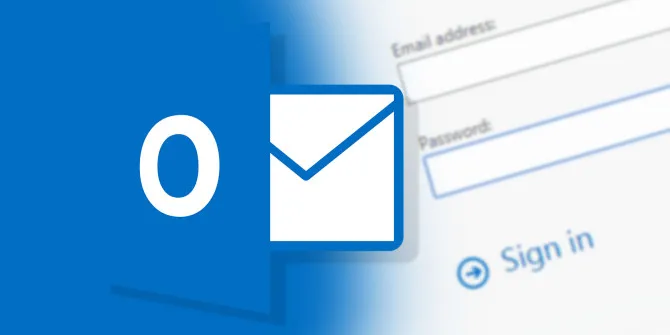
Introduction to SMTP in Outlook Account
SMTP stands for Simple Mail Transfer Protocol, is the standard protocol for sending emails. In setting up your Microsoft Outlook account, the SMTP server is your first port of call.
The correct configuration of your Outlook SMTP account settings ensures your message not only leaves your outbox but also lands where it should. Incorrect SMTP settings can lead to issues like undelivered emails or messages ending up in the spam folder.
The Role of POP, IMAP, and SMTP Server in Email Delivery
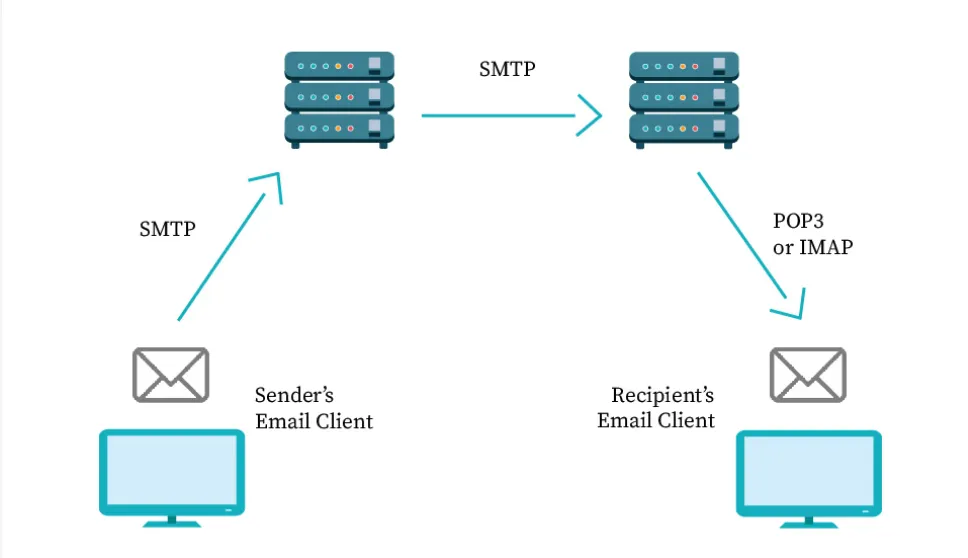
SMTP is used for sending emails, while POP (Post Office Protocol) and IMAP (Internet Message Access Protocol) are used for receiving emails.
When you configure your Outlook account, you need to set up both incoming (POP/IMAP) and outgoing (SMTP) server settings. This ensures that you can both send and receive emails without any problems.
These protocols are crucial for maintaining the flow of emails, ensuring they perform efficiently, be it in Outlook or across multiple devices.
Outlook SMTP Server Settings
For sending Emails, You will need to set up your Outlook.com account (or any Microsoft account) in a different mail app (like Gmail) by these SMTP settings:
- Server Address: smtp.office365.com
- Username: Your Outlook Email Address (e.g. example@outlook.com)
- Password: Your Outlook App Password
- Port Number: 587 (With TLS)
- Encryption Method: STARTTLS
- Alternative Port Number: 25 (Without TLS/SSL)
- Sending Limits: 300 Emails a day or 100 recepients a day.
POP and IMAP Server settings
For receiving emails, set up the IMAP or POP settings in your chosen mail app.
Outlook IMAP settings
- Server Address: outlook.office365.com
- Port Number: 993
- Encryption Method: TLS
Outlook POP settings
- Server Address: outlook.office365.com
- Port Number: 995
- Encryption Method: TLS
Setup Outlook SMTP Server Settings

The simple and correct outlook SMTP settings:
Open Account Settings in Outlook

First, launch the Outlook application. Navigate to the 'File' tab and select 'Account Settings.'

Select Your Email Account

In the 'Account Settings' window, choose the email account you want to configure and click on 'Change.'
Enter SMTP Outgoing Mail Server Hostname Details

In the 'change' account window Scroll to the 'Outgoing mail server (SMTP)' field. Here, type in your SMTP server address, usually formatted like 'smtp.yourprovider.com.'
Authentication Settings
Under 'More Settings,' ensure 'My outgoing server (SMTP) requires authentication' is checked. These email transmissions require secure password authentication.
Test Your Settings
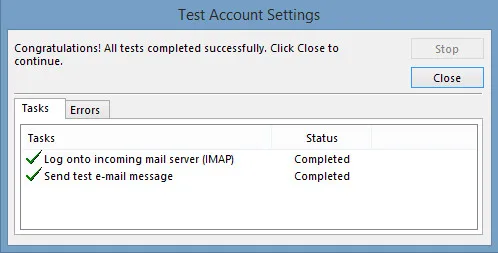
Before finalizing, send a test message or email to confirm that your SMTP settings are working correctly. If it fails, double-check your settings or contact your email provider for assistance.
Advanced SMTP Configuration for Outgoing Mail Server
Accessing Advanced Settings

In Outlook, after entering your basic SMTP server settings, click on the 'More Settings' button. Here, navigate to the 'Advanced' tab. This is where you'll find the options to fine-tune your outgoing mail server settings.
Set the 'Outgoing mail server port' to 587, a standard for SMTP. Ensure you choose the correct encryption method, typically TLS or SSL, for secure email sending.
After configuring outgoing mail servers, they provide better control over email transmission, allowing users to customize settings for security, compatibility, and performance
How to Integrate SMTP Configuration with Incoming Mail Server in Outlook

Setting up Incoming Mail Server: POP and IMAP Server in Outlook
Understanding What is POP and IMAP
POP and IMAP are the protocols that help you with incoming emails, with each having its own advantages.
POP downloads and stores emails locally, allowing offline access, while IMAP synchronizes emails across all devices, providing real-time access to your mail.
Setup POP and IMAP Server in Outlook
Launch Outlook and Access Account Settings
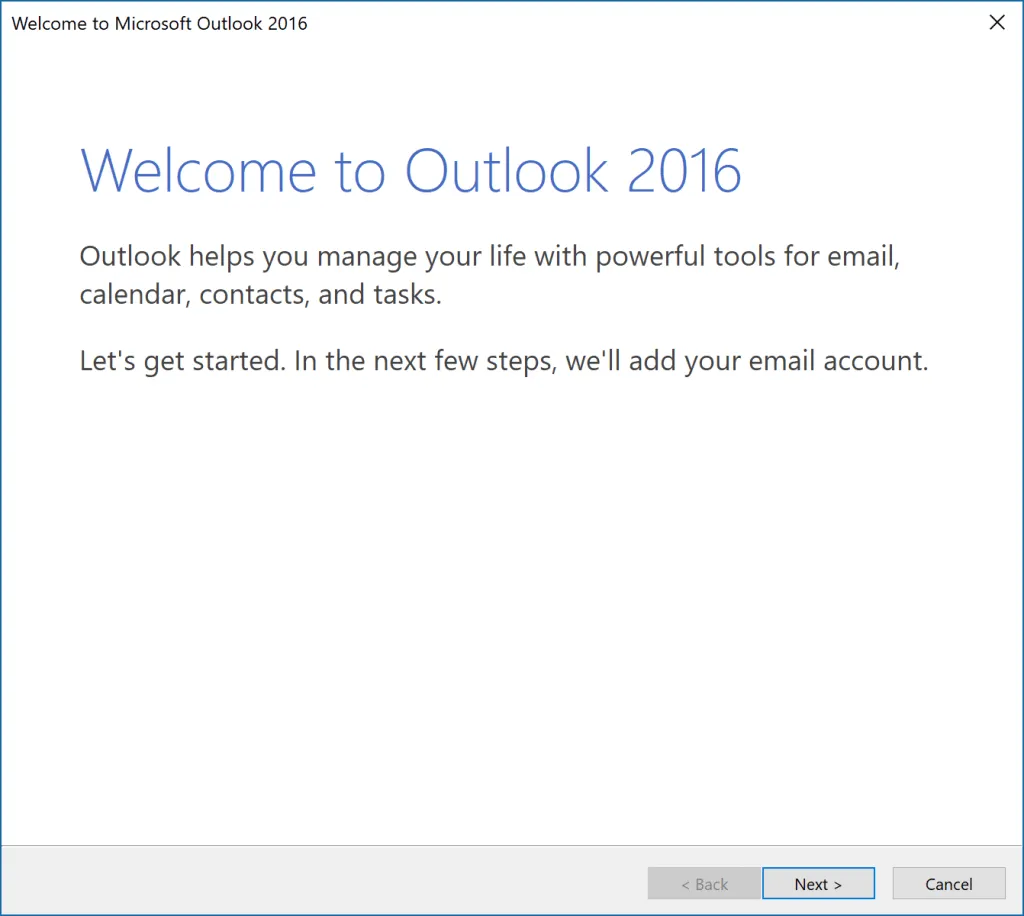
Navigate to the ‘File’ tab, select ‘Info’, and click on ‘Account Settings’, then choose ‘Manage Profiles’.
Add a New Email Account for Outlook Mail
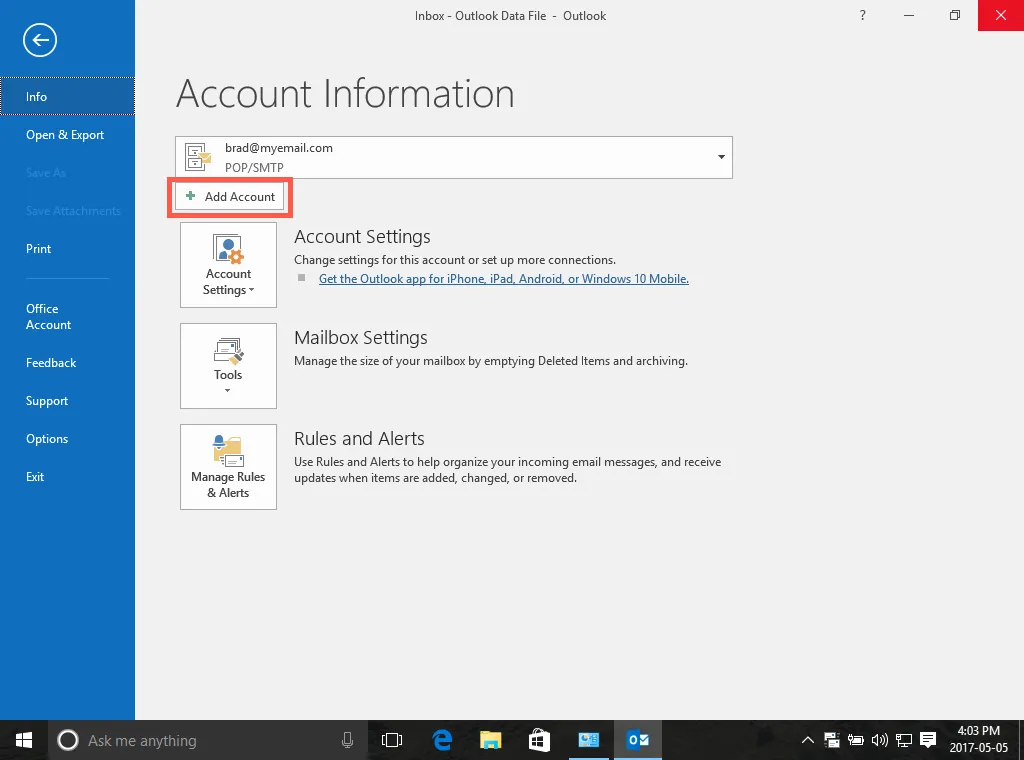
In the ‘Mail Setup - Outlook’ window, click on ‘Email Accounts’.
On the ‘Email’ tab, click ‘New’ to add a new Outlook mail account.
Choose Between POP and IMAP Settings
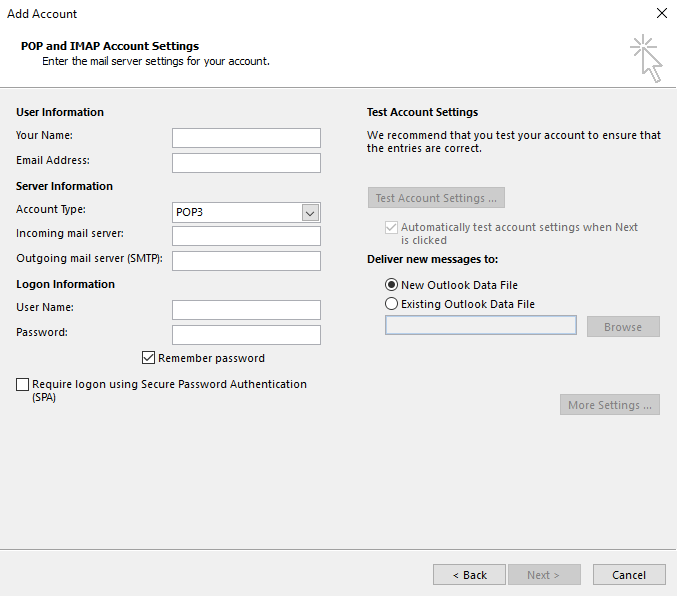
After Clicking on Manual setup or additional server types, This Screen will Appear
For IMAP (recommended for its synchronization capabilities across multiple devices), select ‘IMAP’. For POP (suitable for downloading emails to a single device), choose ‘POP’.
Input Incoming and Outgoing Server Details
Enter the incoming mail server (IMAP or POP server) details, such as ‘imap.outlook.com’ for an IMAP server or ‘pop.outlook.com’ for a POP server.
Input the outgoing mail server (SMTP) details, like ‘smtp.outlook.com’, which is common for Outlook email accounts.
Authentication and Email Account Details

Enter your full email address in the ‘User Name’ field and your Microsoft account password for your Outlook email account.
Advanced Email Settings Configuration
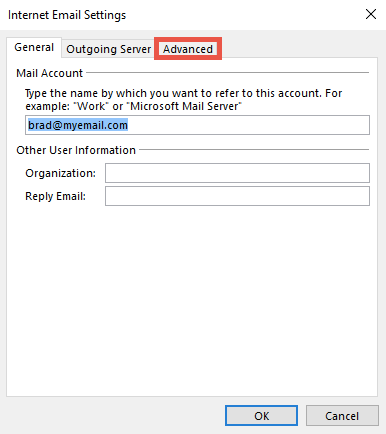
Click on ‘More Settings’ and navigate to the ‘Outgoing Server’ tab.
Ensure ‘My outgoing server (SMTP) requires authentication’ is checked for secure email sending.
In the ‘Advanced’ tab, set the appropriate ports.
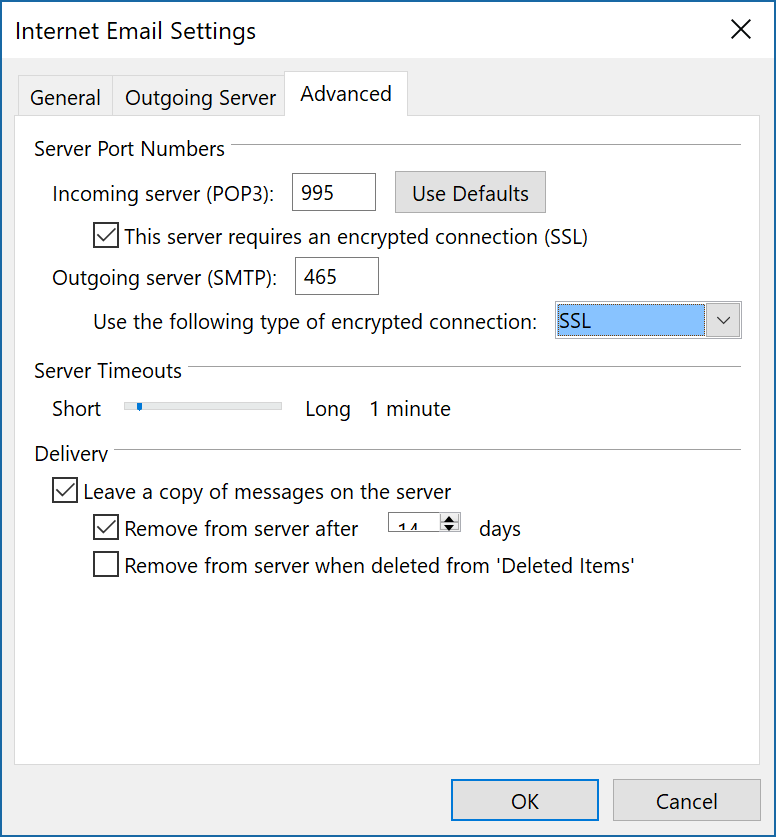
For IMAP, use port 993 with SSL, and for POP, use port 995 with SSL. For the SMTP port, use 587 (with TLS) or 465 (with SSL).

Switch to the Outgoing Server tab. Check the box next to My outgoing server (SMTP) requires authentication, then click the radio button next to Use same settings as my incoming mail server.
Click OK to close the Internet E-mail Settings window. In the POP and IMAP Account Settings window, click the Test Account Settings button to ensure Outlook can communicate with your email server.
Integrate Incoming Mail Server
Open Outlook and Access Account Settings:
Start by opening Microsoft Outlook. Click on the 'File' tab and choose 'Account Settings,' then 'Server Settings.'
Here, you’ll find options for both your incoming and outgoing mail servers.
Configure Your Outgoing Mail Server (SMTP):
In the 'Outgoing Mail Server' section, enter the SMTP server details. This includes the server address (like smtp.outlook.com for Outlook accounts), the SMTP port (usually 587 for TLS), and your authentication details.
Ensure you input the correct Outlook SMTP settings to avoid issues with email delivery.
Link SMTP Settings with Incoming Mail Server:
Your incoming mail server, either IMAP (Internet Message Access Protocol) or POP (Post Office Protocol), needs to work in tandem with your SMTP settings.
In the 'Incoming Mail Server' section, verify your IMAP or POP settings.
- To Enable IMAP Access: Enter the IMAP server address (e.g., imap.outlook.com for Outlook) and port (usually 993 with SSL).
- TO Enable POP Access: Enter the POP server address (e.g., pop.outlook.com for Outlook) and port (usually 995 with SSL).
Testing the Configuration:
After setting up both SMTP and IMAP/POP, send a test email to ensure everything works smoothly.
If there are issues, recheck your settings or consult with your email provider for assistance.
Setup SMTP Server Settings for WordPress Site
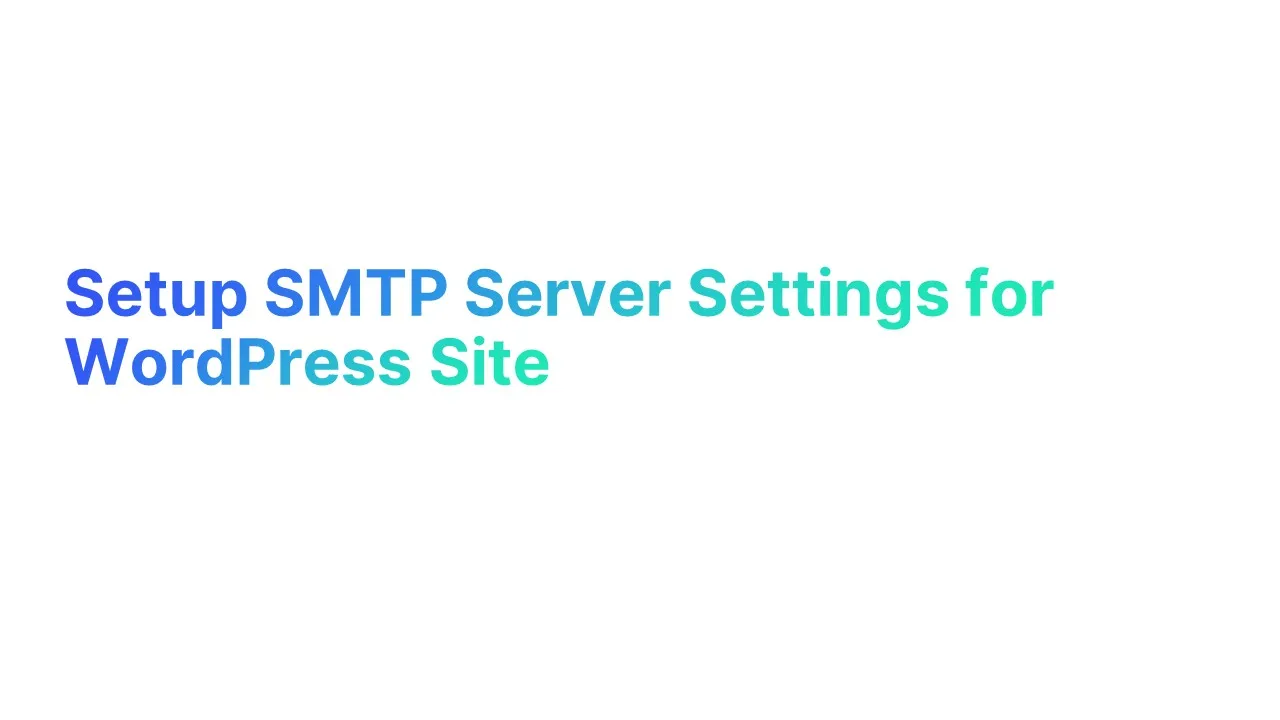
Why SMTP is Needed in WordPress Site
WordPress, by default, uses the PHP mail function, which is not always reliable, leading to emails landing in the spam folder or not being delivered at all.
Most WordPress Sites are dealing with a high volume of outgoing emails, such as notifications, customer interactions, or marketing campaigns, So SMTP settings are crucial for WordPress users
Integrating SMTP (Simple Mail Transfer Protocol) ensures that your WordPress site sends emails via a proper mail server, improving deliverability.
Setting up SMTP Settings for WordPress
Installing a WordPress SMTP Plugin

WordPress requires an SMTP plugin to modify email settings. Options like 'WP Mail SMTP' or 'Easy WP SMTP' are popular.
These plugins enable the configuration of WordPress SMTP plugin settings, ensuring compatibility and efficiency.
Configure SMTP Server Settings in the Plugin
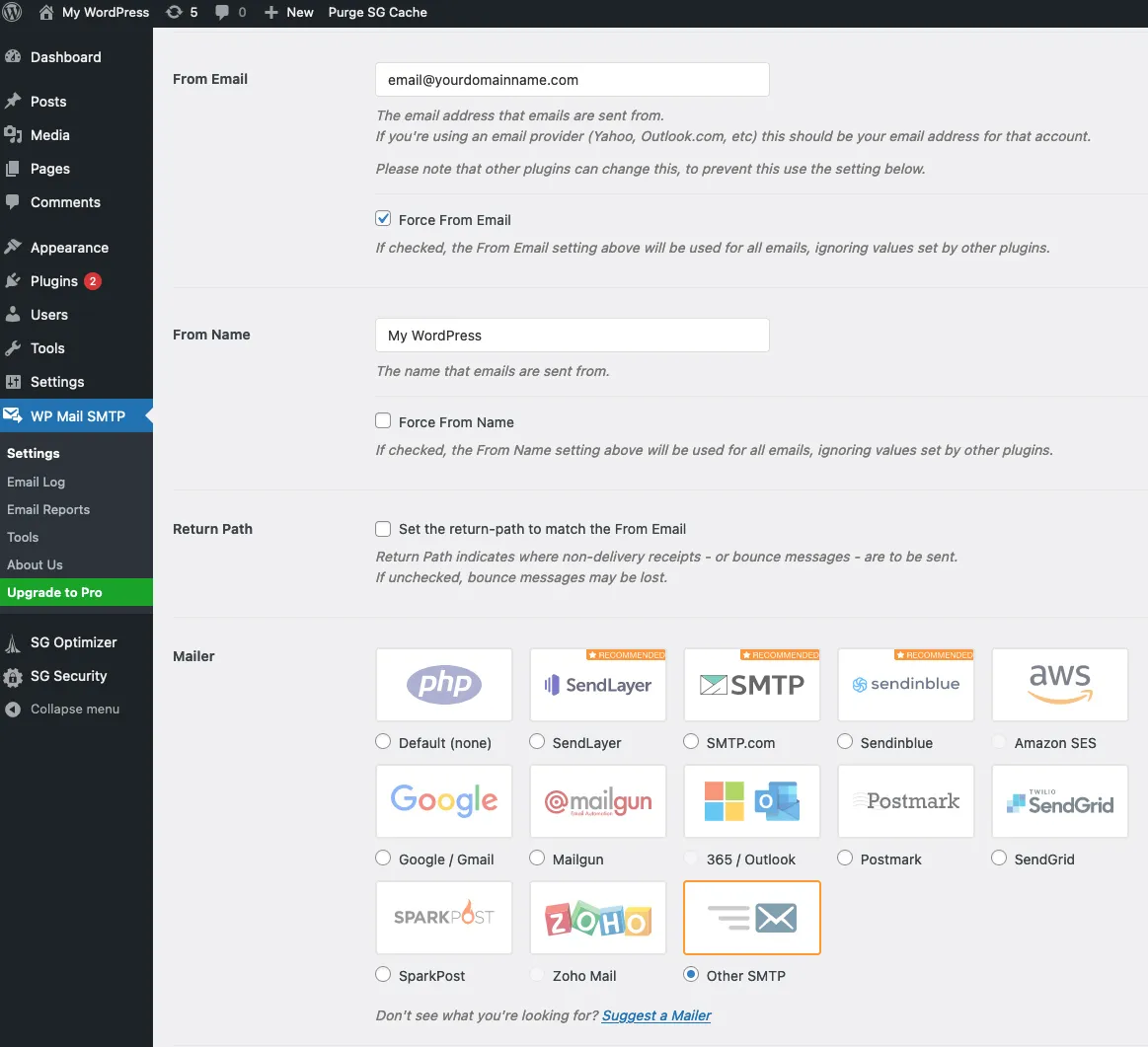
Input details such as 'SMTP host' (your outgoing mail server hostname) and 'SMTP port', typically 587 for TLS or 465 for SSL encryption.
Ensure 'secure password authentication' for your email account is enabled in the SMTP settings for added security.
Use your Email Providers' SMTP Settings

Use SMTP settings provided by your email service, such as Outlook SMTP settings or Gmail account specifics for Gmail users for email delivery.
Use Advance SMTP Configuration for High-Traffic WordPress Sites
For WordPress sites with significant email traffic, consider using advanced SMTP services.
These services, like those requiring a WordPress SMTP plugin, offer robust handling of bulk emails, crucial for e-commerce or large-scale sites.
6. Regular Maintenance and Updates:
Post SMTP plugin and WordPress site Setup Process, Keep both updated to maintain email functionality and security.
How to Deal with SMTP Server Issues and Delivery Issues in Outlook
Check Outlook SMTP Settings
Check SMTP Port and Encryption
- For 'outlook SMTP server' issues, tweaking the port settings can sometimes resolve connectivity problems.
Authentication and Security Settings
- Verify if 'secure password authentication' is enabled. This setting is vital for protecting your 'email account' against unauthorized access.
- For Outlook account password issues, resetting your password might be necessary.
Diagnosing Email Delivery Failures
- If you're having trouble with sending emails, check for error email messages. These can indicate whether the issue is with the server, your 'outlook password', or network settings.
- Consider using the 'test message' feature in message tab in account settings to diagnose sending errors.
Using Outlook's Repair Function
- For persistent problems, utilize Outlook’s repair tool. It’s particularly helpful for 'non-outlook account' configurations or if 'SMTP servers' settings need revalidation.
Tips for Efficient SMTP Configuration and Outlook Email Management
Outlook SMTP Settings for Reliable Email Communication
Managing Outlook emails effectively starts with proper SMTP configuration. By fine-tuning these settings, you enhance not just the sending of emails, but their overall reliability and security as well.
Ensure Correct Settings for Outlook SMTP Server
Select Appropriate SMTP Port and Encryption
Integrate with Incoming Mail Server
Test SMTP Functionality in Outlook:
Streamlining Email Management in Outlook
Beyond SMTP configuration, efficient management of your Outlook account involves several best practices:
Organize with Folders and Rules:
- Utilize Outlook's folder system and create rules for automatic email sorting. This helps in managing your Outlook account email effectively.
Regular Maintenance of Outlook Mail:
- Periodically clean your 'Outlook emails', archive old emails, and ensure your preferred email client is up-to-date.
- For users managing multiple accounts, including 'non-Outlook accounts', this is particularly important.
Backup and Security:
- Regularly back up your Outlook data, especially if you're using Outlook for business purposes, to safeguard your 'mail account'.
- Keep an eye on 'email provider' updates and security advisories.
Utilizing Outlook’s Advanced Features:
- Explore the 'advanced tab' features in the account tab for more customization options.
- Understand and configure 'SMTP servers' and 'SMTP server settings' if using Outlook for 'email marketing' or bulk email outreach campaigns.









